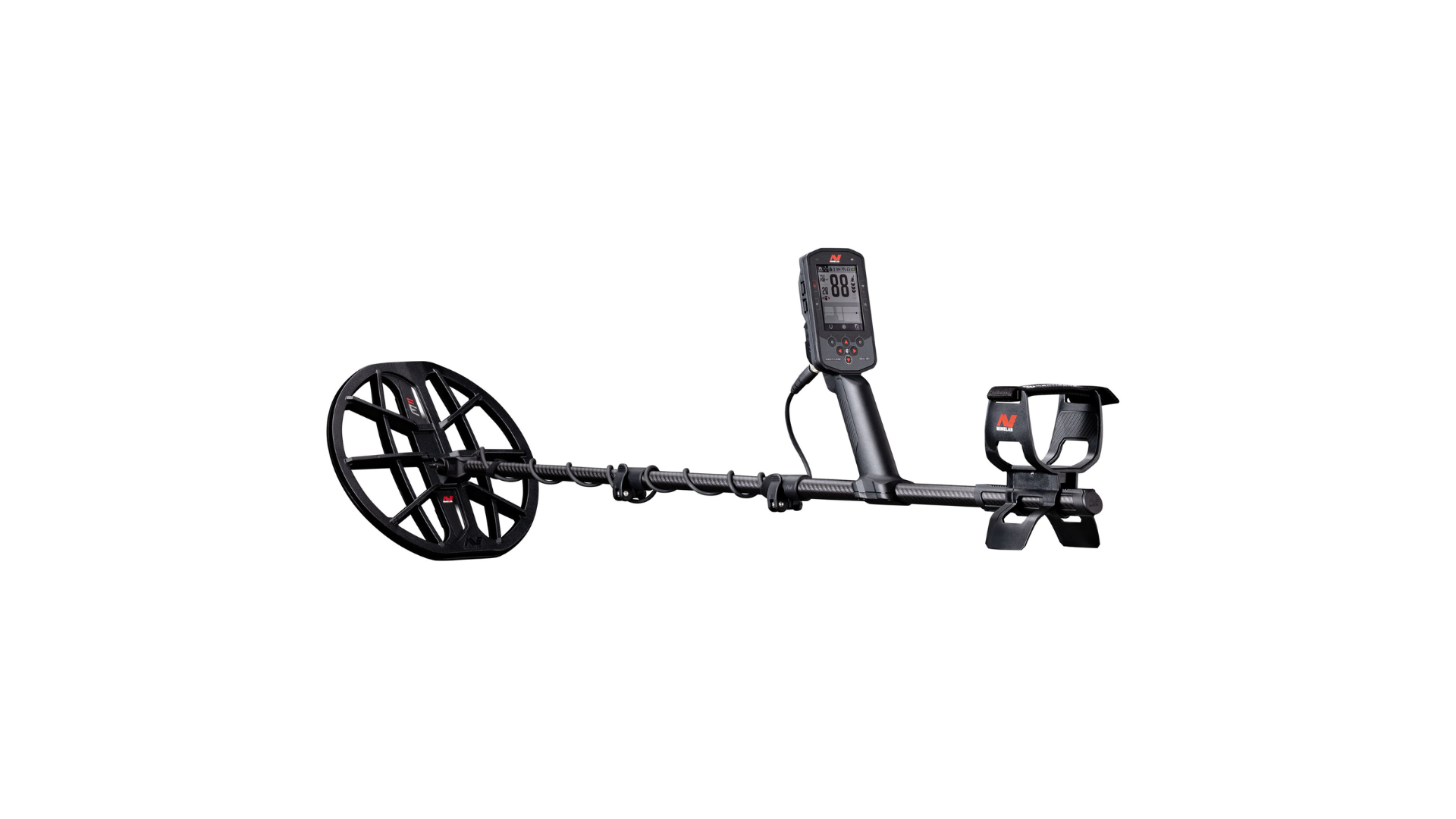La detección de metales es más que un pasatiempo; para muchos, es una actividad emocionante que brinda la emoción del descubrimiento. Ya sea que sea nuevo en el juego o un cazador de tesoros experimentado, tener el detector de metales adecuado puede marcar la diferencia en sus aventuras. Con tantas opciones disponibles, desde modelos básicos hasta dispositivos de alta gama, seleccionar el correcto puede resultar abrumador. Esta guía lo ayudará a comprender cómo elegir un detector de metales que se ajuste a sus necesidades, lo que le garantizará la mejor relación calidad-precio.
1. Discriminación e identificación de objetivos
Uno de los aspectos más importantes a la hora de seleccionar un detector de metales es su capacidad de discriminación e identificación de objetivos. Estas características le ayudan a diferenciar entre los tipos de metales y evitar desenterrar elementos no deseados, como tapas de botellas y chatarra.
La discriminación permite que el detector ignore ciertos tipos de metales que no le interesan, como el hierro o el aluminio. Esta función es particularmente útil en áreas con mucha basura. La identificación de objetivos proporciona una señal visual o auditiva que indica el tipo de metal detectado, lo que le ayuda a decidir si vale la pena dedicar tiempo a excavar.
Los modelos de gama alta, como los detectores de metales Minelab y Nokta, son conocidos por sus capacidades de discriminación avanzadas, que le permiten afinar su búsqueda. Estos detectores pueden incluso distinguir entre diferentes denominaciones de monedas o predecir el material probable del objeto, lo que hace que su búsqueda de tesoros sea mucho más eficiente y productiva.
2. Frecuencia de funcionamiento y sensibilidad
Comprender la frecuencia de funcionamiento y la sensibilidad de su detector es fundamental para elegir el modelo adecuado. La frecuencia de funcionamiento se refiere a la velocidad a la que el detector envía ondas electromagnéticas al suelo. Las frecuencias más bajas (1-4 kHz) son ideales para encontrar objetos más grandes y profundos, como reliquias y monedas, mientras que las frecuencias más altas (por encima de los 15 kHz) son más adecuadas para metales más pequeños y de alta conductividad, como el oro.
La sensibilidad se refiere a la capacidad del detector para detectar objetos pequeños o profundos. Un detector más sensible puede localizar objetos más pequeños o enterrados a mayor profundidad, pero esto también puede generar señales falsas de minerales o escombros en el suelo.
Por ejemplo, los detectores de metales Minelab ofrecen múltiples configuraciones de frecuencia que le permiten realizar ajustes según el terreno que esté buscando. Un detector de metales resistente al agua con sensibilidad ajustable es perfecto para los cazadores de tesoros que exploran playas, bosques e incluso entornos submarinos.
3. Tamaño y forma de la bobina de búsqueda

El tamaño y la forma de la bobina de búsqueda pueden influir en gran medida en el rendimiento de un detector. Las bobinas más grandes cubren más terreno y pueden detectar objetivos más profundos, lo que las hace ideales para encontrar tesoros enterrados profundamente. Sin embargo, pueden pasar por alto objetos más pequeños cerca de la superficie. Las bobinas más pequeñas son más sensibles a los objetivos poco profundos, pero tienen una profundidad limitada.
Las bobinas de búsqueda tienen distintas formas, siendo las más comunes las concéntricas y las elípticas. Las bobinas concéntricas son ideales para principiantes porque ofrecen un campo de detección amplio, mientras que las elípticas ofrecen una detección más precisa en áreas estrechas.
Los detectores de metales Nokta ofrecen una amplia variedad de tamaños y formas de bobinas, lo que garantiza que su detector sea adecuado para el entorno específico en el que estará buscando. Ya sea que esté buscando en un parque o en un desierto agreste, elegir la bobina adecuada puede marcar la diferencia.
4. Balance de suelos y mineralización
El equilibrio del terreno es otro factor esencial a tener en cuenta a la hora de elegir un detector de metales. Muchos suelos, especialmente en zonas ricas en minerales, pueden producir interferencias que provoquen lecturas falsas. Esto se debe a la mineralización del terreno, donde los minerales naturales del suelo afectan las señales del detector.
Un buen detector de metales ofrecerá un balance de tierra automático o manual para ayudar a contrarrestar estos efectos. El balance de tierra automático ajusta la configuración en función de las condiciones del suelo, mientras que el balance de tierra manual le brinda más control para ajustar el rendimiento de su detector.
Los detectores avanzados, como los detectores de metales Minelab, suelen venir equipados con funciones de balance de tierra tanto automáticas como manuales. Esto resulta especialmente útil si busca en zonas con composiciones de suelo variables, como playas o desiertos. Si planea buscar cerca del agua o en zonas con suelo altamente mineralizado, invertir en un detector de metales resistente al agua con potentes funciones de balance de tierra es una opción inteligente.
5. Indicadores visuales y auditivos
Cuando se trata de identificar un tesoro escondido, la combinación de indicadores visuales y sonoros puede hacer que la búsqueda sea más eficiente. La mayoría de los detectores de metales modernos ofrecen ambos, lo que garantiza que no se pierda señales importantes. La señal sonora, normalmente en forma de tonos variables, le avisa cuando el detector identifica un objeto metálico, mientras que los indicadores visuales proporcionan información más detallada sobre el tipo y la profundidad del objeto.
Muchos detectores, especialmente los modelos de gama alta como los detectores de metales Minelab, ofrecen una gama de tonos de audio para ayudarle a distinguir entre distintos metales. Por ejemplo, un tono agudo podría indicar oro, mientras que un tono más bajo podría indicar hierro. Esta diferenciación puede ahorrarle excavaciones innecesarias.
En cuanto a la parte visual, muchos detectores cuentan con pantallas LCD que muestran datos útiles como el tamaño del objeto, la profundidad y el tipo de metal detectado. Estas características, combinadas con señales de audio claras, hacen que su experiencia de búsqueda de tesoros sea mucho más agradable y exitosa.
6. Características adicionales
Los detectores de metales actuales vienen equipados con una variedad de funciones adicionales que mejoran su experiencia de búsqueda de tesoros. Una de las funciones más solicitadas es el modo de localización precisa, que le permite concentrarse en un área específica para excavar con mayor precisión. Esta función es particularmente útil cuando ya ha identificado un objetivo y desea delimitar su ubicación exacta.
Otras características notables incluyen postes ajustables, que hacen que el detector sea cómodo de usar para personas de diferentes alturas, y auriculares inalámbricos, que permiten una experiencia de manos libres. Los detectores de metales Nokta ofrecen muchas de estas funciones avanzadas, incluida la tecnología multifrecuencia, conectividad inalámbrica e incluso sistemas GPS integrados.
Si planeas buscar en áreas donde hay agua, un detector de metales resistente al agua es imprescindible. Esta característica protegerá tu detector de daños por humedad, lo que te permitirá explorar playas, ríos e incluso aguas poco profundas con confianza.
7. Presupuesto y marcas
Tu presupuesto juega un papel clave a la hora de decidir qué detector de metales comprar. Los detectores de metales pueden tener un precio que va desde menos de 100 dólares para los modelos básicos hasta más de 1000 dólares para los aparatos avanzados de nivel profesional. Es importante equilibrar tu presupuesto con las características que necesitas para tomar la mejor decisión.
Si recién está comenzando, un detector de metales Minelab de rango medio puede ofrecerle todas las capacidades que necesita sin abrumarlo con funciones avanzadas. Por otro lado, los cazadores de tesoros experimentados pueden considerar que vale la pena invertir en modelos de gama alta que ofrecen múltiples frecuencias, mejor discriminación y balance de tierra mejorado.
Minelab y Nokta son dos de las marcas más confiables en el mundo de la detección de metales y ofrecen una amplia gama de detectores que se adaptan a diferentes niveles de habilidad y presupuestos. Al momento de elegir, considere la frecuencia con la que planea usar su detector y en qué entornos, ya que esto lo ayudará a elegir el modelo adecuado para sus necesidades.
8. Opiniones y recomendaciones de usuarios
Antes de finalizar la compra, siempre es una buena idea consultar las opiniones y recomendaciones de los usuarios. Estas pueden proporcionar información valiosa sobre el rendimiento de los distintos modelos en distintas condiciones. Por ejemplo, un detector puede funcionar excepcionalmente bien en playas de arena, pero tener dificultades en suelos muy mineralizados.
Los foros y comunidades en línea dedicados a la detección de metales son excelentes recursos para obtener comentarios de primera mano de otros aficionados. Encontrará reseñas de detectores de metales Minelab y Nokta de usuarios reales que los han probado en diferentes entornos, lo que le dará una idea clara de las fortalezas y debilidades de cada modelo.
Las reseñas de los usuarios también suelen destacar posibles problemas que podrían no ser evidentes en las descripciones del fabricante. Ya sea la duración de la batería, la durabilidad o la facilidad de uso, estas experiencias de primera mano pueden ayudar a orientar su decisión y garantizar que tome una decisión bien informada.
Envolver
Para elegir el detector de metales adecuado, es necesario tener en cuenta cuidadosamente factores como la discriminación, la frecuencia de funcionamiento, el tamaño de la bobina y el presupuesto. Si tiene en cuenta estos elementos e investiga sobre marcas de confianza como Minelab y Nokta, podrá encontrar un detector que se adapte a sus necesidades de búsqueda de tesoros. Ya sea que esté buscando monedas, joyas o reliquias, seguir esta guía lo ayudará a tomar la mejor decisión al comprar detectores de metales.




Dejar un comentario